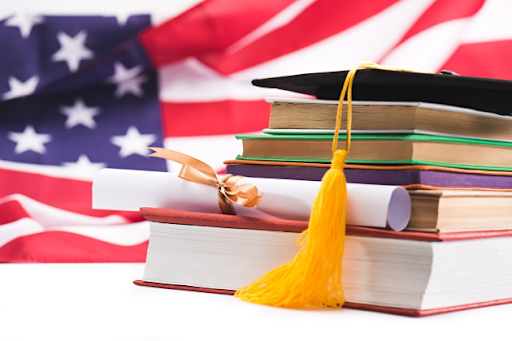Education Politics

Photo Source: Exclusive.multibriefs.com
November 28, 2022
In the past six years, there is no denying political tensions within the country have reached a breaking point. After the strenuous 2016 elections, Republicans and Conservatives have been fueling riots and preventing the passing of bills to slow the progression of US legislation. January 6th is a typical example, as well as the overturning of Roe vs Wade and the murder of George Floyd. While the collective party or conservative mindset can’t take the blame, there is little doubt they didn’t influence and worsen situations with old-fashioned ideals and offensive stances. Democrats and liberal extremists may point to small perspectives, limited experiences, or taught prejudice, among other unsavory perceptions. But what if the answer is more straightforward, something we as a nation could leverage to create unity once again: state-legislated education curriculums?
A mother in Texas, when reading through the history book of her child, was shocked to find a very offensive and completely incorrect statement referring to slavery in the US. The Texas book referred to all slaves as “workers” or “immigrants”. This implies slaves -kidnapped, imprisoned, and tortured people- had a choice in their forced move to this country, was all equality paid, and could leave their masters without issue. This is completely false and colors the minds of impressional students and voters, leading to a major misunderstanding of American History and the reason for the Civil War. Surprisingly, this is not the only discrepancy. A study done in 2016 revealed, when comparing Texas to a California history book, many topics had been censored and changed based on the political leadership within their respective states. The Second Amendment is taught as a legislative law in California but an inherent, godly right in Texas. This has led to a power struggle with gun legislation in many states, allowing no progress to be made while public shootings are on the rise. Other topics of misinformation included if environments are changing, whether immigrants are a burden or a boon, should we praise or reject Nationalism and the Founding Fathers, and if Christianity is the only allowable religion (Pearson Education, United States History: The Twentieth Century). If you have been paying attention to recent bills and hot-button topics, you will notice the similarities. State education legislation is not a new subject, but when the facts and information are given to students incorrectly, it taints their perspectives on the world and leads to the debates, arguments, and political strife seen in the US today.
So what can we do to change state misinformation and make facts more accessible? I believe the best course of action would be the removal of state-legislated censorship. McGraw-Hill has stated they have the completed versions of their books without state-specific requests, as that is how their books start. Then they go through the censorship process for each state and get published and distributed. Instead, they would print a non-politicized, completed version of the history books, allowing students to read without limits or blinders for either side. Teachers, while having their own opinions, would have to teach everything and allow students to formulate their own opinions based on fact and experience, not authority and older belief systems.
History is a complex subject to research, as documents can be destroyed, words can be omitted and changed, and accounts are often written by the victors or people in power. Our country has silenced, blotted, and hidden the facts about our actions for decades, and their censorship is fueling the sharp divide in our policies and political views. While taught hate is a prevalent drive for either side’s views, truthful accounts could help growing youth step out of their parent’s and authority figures’ beliefs and have a well-researched, fact-backed understanding of historical events, debate topics, and hot-button issues, leading to smarter, stronger voters.
